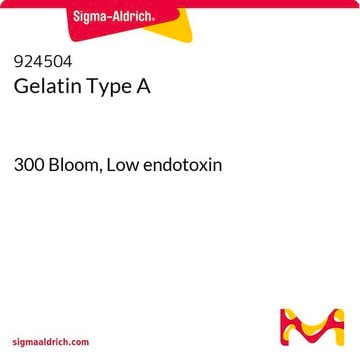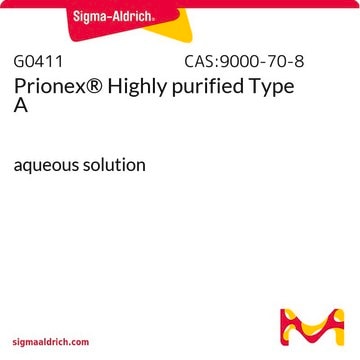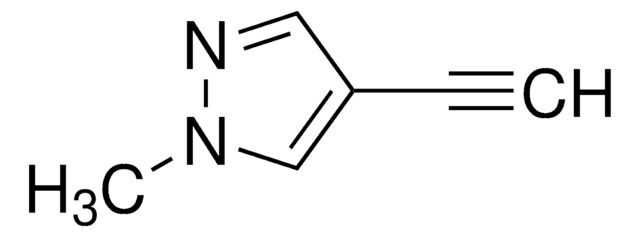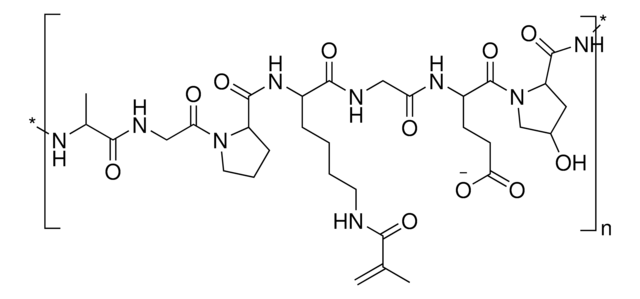901756
Low endotoxin gelatin from porcine skin
gel strength 240-360 (Bloom), <10 EU/g Endotoxin
Synonym(s):
beMatrix™ gelatin LS-H
About This Item
Recommended Products
form
powder
impurities
<10 EU/g Endotoxin
<300 g Total viable aerobic count
loss
<15% loss on drying
color
white to pale yellow
pH
5.0-6.5
viscosity
4.0-6.5 mPa.s
anion traces
sulfite (SO32-): <1.5 mg/20g
cation traces
As: <1 ppm
Hg: <0.1 ppm
heavy metals: <20 ppm
Looking for similar products? Visit Product Comparison Guide
Related Categories
Application
Legal Information
Storage Class Code
11 - Combustible Solids
WGK
nwg
Flash Point(F)
Not applicable
Flash Point(C)
Not applicable
Certificates of Analysis (COA)
Search for Certificates of Analysis (COA) by entering the products Lot/Batch Number. Lot and Batch Numbers can be found on a product’s label following the words ‘Lot’ or ‘Batch’.
Already Own This Product?
Find documentation for the products that you have recently purchased in the Document Library.
Customers Also Viewed
Protocols
Frequently asked questions (FAQs) for KAPA SYBR® FAST One-Step qRT-PCR Kits.
Frequently asked questions (FAQs) for KAPA SYBR® FAST One-Step qRT-PCR Kits.
Frequently asked questions (FAQs) for KAPA SYBR® FAST One-Step qRT-PCR Kits.
Frequently asked questions (FAQs) for KAPA SYBR® FAST One-Step qRT-PCR Kits.
Our team of scientists has experience in all areas of research including Life Science, Material Science, Chemical Synthesis, Chromatography, Analytical and many others.
Contact Technical Service












